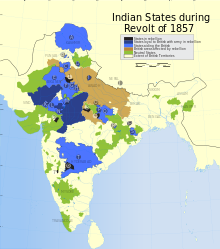To ask other readers questions about India's Struggle for Independence, please sign up. Be the first to ask a question about India's Struggle for Independence -Biased to show congress and Nehru, Gandhi in good lights. Probably a politically sponsored account of Indian freedom struggle. Penguin books INDIA'S STRUGGLE FOR INDEPENDENCE Bipan Chandra. Outstanding in this respect was the role of Hansh Chandra Mukheiji, editor of the.
For more than 200 years, Britain had asserted its iron will over India. From the East India Company levying taxes starting in the 18th century to Britain instituting direct rule over two-thirds of the country in the mid-19th century, India had been extorted for centuries—and with the start of World War II, India was declared to be at war with Germany without any Indian political leaders actually being consulted. The nation would go on to provide for an army as well as food and other goods to help the Allies defeat the Axis Powers. Much as the (the largely Hindu public assembly that had some governmental functions) sympathized with defeating fascism, they balked at seeing their country further pillaged for resources. So in 1939, members of the Congress informed Viceroy Lord Linlithgow—the highest-ranking British official in India—they would only support the war effort if Indian independence lay at the end of it. To which Linlithgow issued his own threat: if the Congress didn’t support Britain, Britain would simply turn to, and empower, the (a political group that fought to protect the rights of Muslim Indians and later called for a separate nation for Muslims).
As, “the Hindu-Moslem feud [was] a bulwark of British rule in India.” The Congress could do nothing but acquiesce. But they hadn’t abandoned the fight, especially one of their most notable members: Mohandas “Mahatma” Karamchand Gandhi.


The spiritual and political leader first experienced racism decades earlier, as a London-educated lawyer working in colonial South Africa. There, he was thrown off a train for trying to sit in the first class car; the 1893 incident led him to his civil rights work, for which he was repeatedly imprisoned. “I discovered that as a man and as an Indian I had no rights,” in South Africa. “More correctly, I discovered that I had no rights as a man because I was an Indian.” Agitating for change through nonviolence would become Gandhi’s lifelong pursuit.
Caterpillar et factory passwords change keygen generator torrent. Caterpillar Et Factory Passwords Change Keygen Generator Torrent. With keygen is caterpillar et electronic technician 2011a v1.0 keygen update version.
On the eve of World War II, twice in hopes of persuading the dictator to avoid total war (it’s impossible to know if Hitler read the letters, as no response was ever sent). And when India was forced to assist the United Kingdom in the fight, Gandhi began a small individual civil disobedience campaign, recruiting political and community leaders for the cause. Although his 1940 effort was disrupted by arrests of the participants, popular opinion in England was largely on Gandhi’s side—U.K. By 1942, Prime Minister Churchill felt enough pressure to send Sir Stafford Cripps, a member of the War Cabinet, to discuss a change to India’s political status. But upon learning that Cripps wasn’t actually offering full independence and that current Indian politicians would still have no say, the Congress and the Muslim League rejected his proposal—leaving Gandhi open to harness the wave of anti-British sentiment for a new round of protests. The movement, Gandhi decided, would be called “Quit India” to reflect his main demand: that the United Kingdom leave India voluntarily. In a speech at a meeting of the Congress in Bombay at the beginning of August 1942, that this was the moment to seize power: “Here is a mantra, a short one, that I give to you.